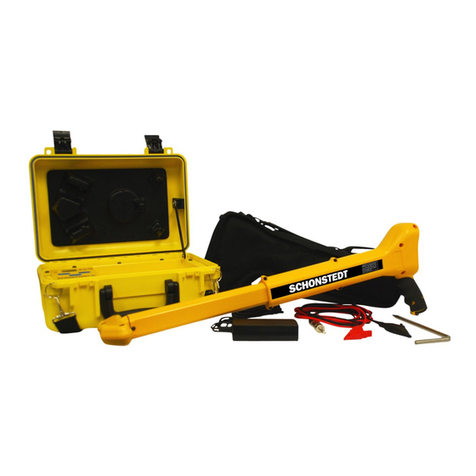
Operation (cont.)
HIGH SENSITIVITY The sensitivity of the locator
is increased by turn ing the sensitivity
knob in a clockwise direction. A
h igh sensitivity setting imposes
some constraint on operating meth-
ods. The locator tone will vary in
frequency depending on the instru-
ment's orientation in the earth's
magnetic f ield.
Control Setting for High Sensitivity
SEARCH
Set the sensitivity control for normal operation and grasp the locator
just below the large end as illustrated. Because the upper sensor is located
near where the locator is usually held, wrist watches may produce unwant-
ed tone frequency changes. To avoid such problems either remove the
wrist watch or use the other hand. Also, avoid bringing the locator close
to your shoes, since they might contain magnetic material.
To obtain maximum area coverage, the locator should be swept from
side to side with the smallend of the instrument kept close to the ground.
A higher frequency tone will be heard from the loudspeaker when the
locator is within range of an iron marker.
When searching using extend-
ed range, avoid turning the locator
about its long axis as this may pro-
duce signal variations arising from
misalignment of the sensors.
The presence of a ferromag-
netic object will be indicated by a
change in tone frequency.
Searching With the Locator




























